How Custom Printed Cardboard Jigsaw Puzzles Are Made | Step-by-Step Manufacturing Guide
Custom jigsaw puzzles have evolved from a casual leisure product into a marketing tool, retail merchandise, educational material, and brand storytelling medium. For buyers who are comparing suppliers or preparing a new project, understanding the manufacturing workflow helps you evaluate quality, lead time, and cost with confidence.
As a professional paper printing factory in China, we manufacture custom cardboard puzzles on a daily basis. Below is a detailed, step-by-step description of how a custom puzzle is made from artwork submission to final packing.
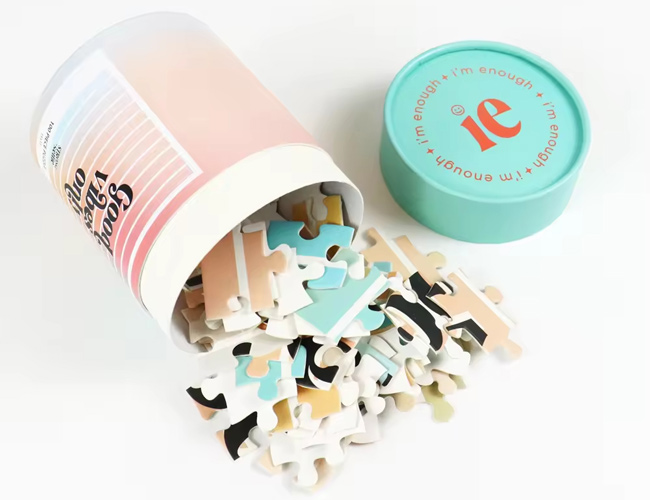
Custom Printed Puzzles with Tube Packaging
Step 1 — Pre-Press & File Preparation
Artwork Review for Print Readiness
Before we print, every file goes through a pre-press check to ensure production compatibility. We verify:
-
Resolution: Minimum 300 DPI for sharp print
-
Color mode: CMYK instead of RGB
-
Bleed: Typically 3–5 mm beyond trim line
-
Safe margin: To prevent key content near edges
-
Fonts & vectors: Outlined or embedded
Color Proofing & Approval
We provide a digital proof or PPS (pre production sample) depending on the project. Only after the customer confirms, we release files for printing to avoid downstream errors.
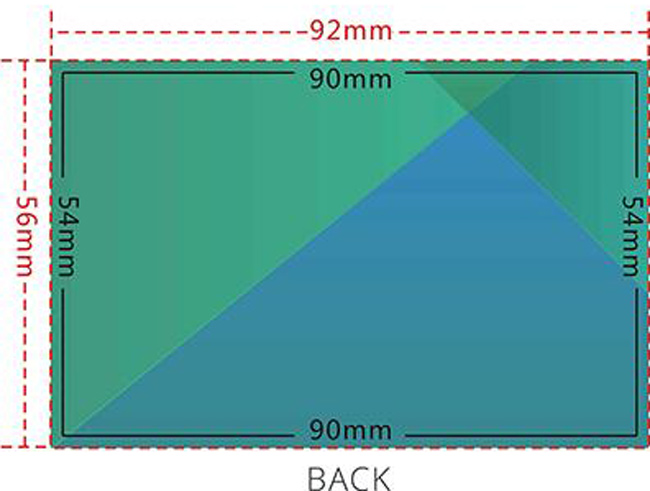
Print File Bleed
Step 2 — Image Printing on Specialty Paper
Printing Technology
We choose offset or digital based on quantity and color requirements:
-
Offset printing — economical for large volume, stable color consistency
-
Digital printing — flexible for small MOQ, sample runs, personalization
Ink & Color Stability
We use high-grade inks for long-term color retention. For museum, children, or eco projects, water-based and soy-based inks are available on request.
Step 3 — Surface Lamination & Finishing
Lamination protects the printed surface before die-cutting. It prevents ink cracking and improves tactile experience.
Common finishes include:
-
Gloss lamination — color vibrancy and reflectivity
-
Matte lamination — premium look, low reflection for photography or puzzles used outdoors
-
Soft touch film — velvet feel for premium brand puzzles
-
Linen embossing — anti-glare and grip comfort, seen in high-end retail puzzles
-
Anti-scratch / Anti-fingerprint — for commercial use and longevity
Step 4 — Bonding Print Sheet to Puzzle Board (Mounting)
Printed sheets are mounted onto greyboard puzzle board with controlled adhesive to prevent warping and delamination.
Common board thickness:
-
1.2 — 1.5 mm for lightweight or marketing giveaway puzzles
-
2.0 — 2.5 mm for premium retail, gallery puzzles, collector sets
Flatness, stiffness, and moisture control are inspected before cutting.
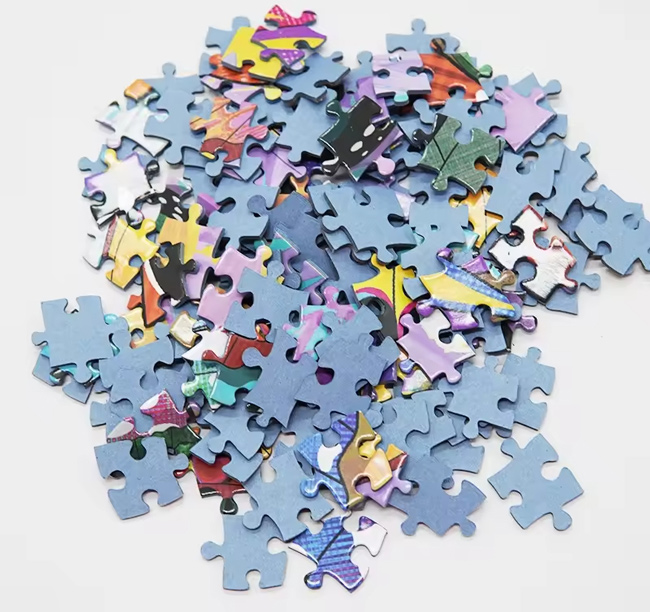
Custom Printed Blue Board Jigsaw Puzzles
Step 5 — Precision Die-Cutting
Steel Rule Die Cutting
A die board with a pre-designed blade layout cuts the puzzle into pieces. Key parameters:
-
Blade hardness & tolerance
-
Cutting pressure control
-
Clean edge quality without tearing
-
Dust reduction and minimal burr
Standard vs. Custom Cut Layout
We offer standard interlock layouts or fully custom die patterns for brand-shaped, themed, or irregular puzzles.
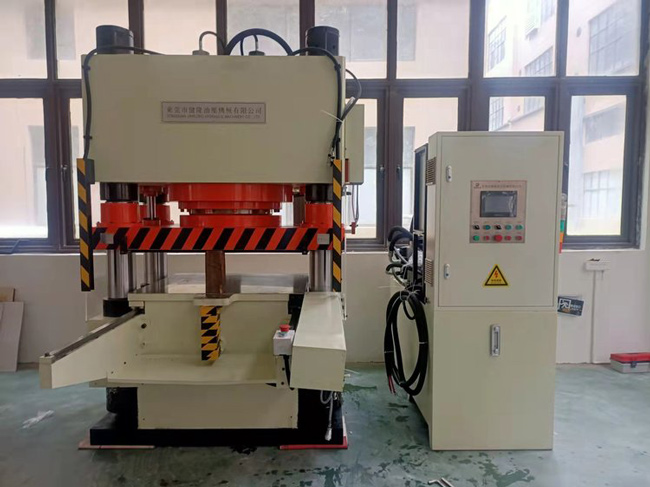
Cardboard Puzzle Cutting Machine
Step 6 — De-dusting & Quality Control
After cutting, puzzles are manually separated for inspection.
We check for:
-
Missing pieces
-
Edge integrity and fit accuracy
-
Print alignment vs. cut path
-
Surface defects, scratches, or bubbles
Any non-conforming unit is rejected before packing.
Step 7 — Packing & Brand Personalization
Packaging is not only protection — it is visual marketing at retail and unboxing experience for gifting.
Available formats:
-
Lid & base rigid box
-
Drawer box
-
Tin box
-
Zipper pouch or kraft bag
-
Shrink wrap retail ready
Brand add-ons:
-
Instruction card / card insert
-
Barcodes, QR, serials
-
Window display
-
Custom seals & labels
Bulk packing and export cartons follow transport protection standards to guarantee safe international delivery.
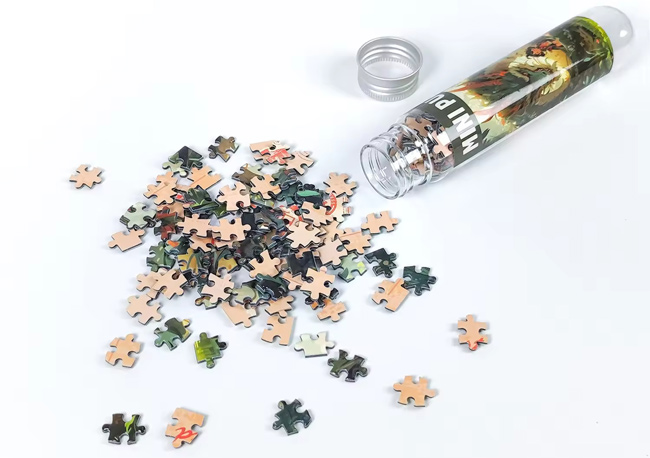
Micro 150-piece Test Tube Jigsaw Puzzles
Step 8 — Final QC, Fumigation & Global Shipment
Before shipment, we finalize:
-
Quantity check
-
Random piece-fit test
-
Carton drop protection check
-
Pallet fumigation (for some countries)
-
Export documents & labeling
We ship worldwide by air, sea, rail, or courier depending on timeline and budget.
Why This Workflow Matters to Buyers
The manufacturing workflow directly defines:
-
Color stability — determined by print + lamination sequence
-
Fit accuracy — influenced by die tooling and board hardness
-
Product lifetime — driven by thickness, finish, and edge finishing
-
Brand perception — achieved through packaging and tactile feel
Understanding the process allows B2B buyers to write better specifications in RFQs and avoid vague purchasing decisions that cause disputes later.
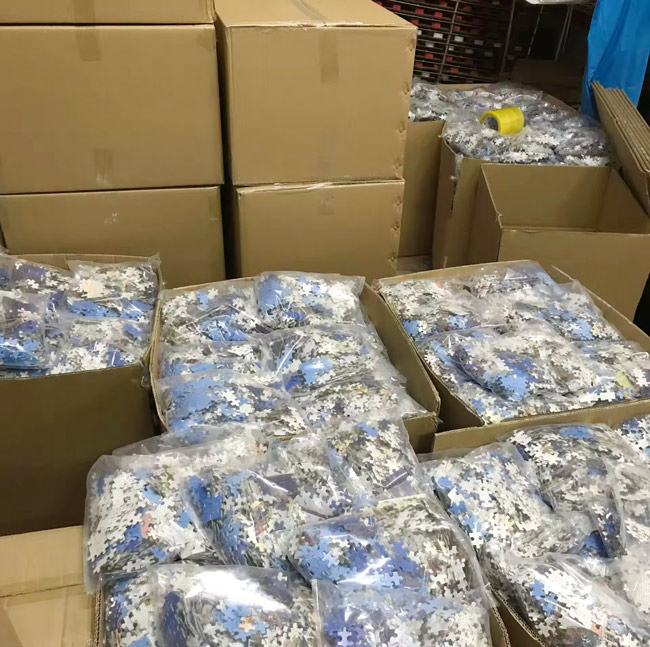
Jigsaw Puzzles Production Ready for Shipping
Summary & Takeaway
Every stage — from file preparation to die-cutting and packaging — contributes to the final performance of a custom printed jigsaw puzzle. Cutting corners on board density, lamination, or tooling cost may not be visible in photos, but it will show immediately when the product is handled by a consumer or sold in retail.
A controlled and documented workflow is the key difference between commodity puzzles and branded, commercial-grade puzzles.
If you need a manufacturing partner for custom printed cardboard puzzles, we can help with pre-press, sampling, mass production, and export shipping.





